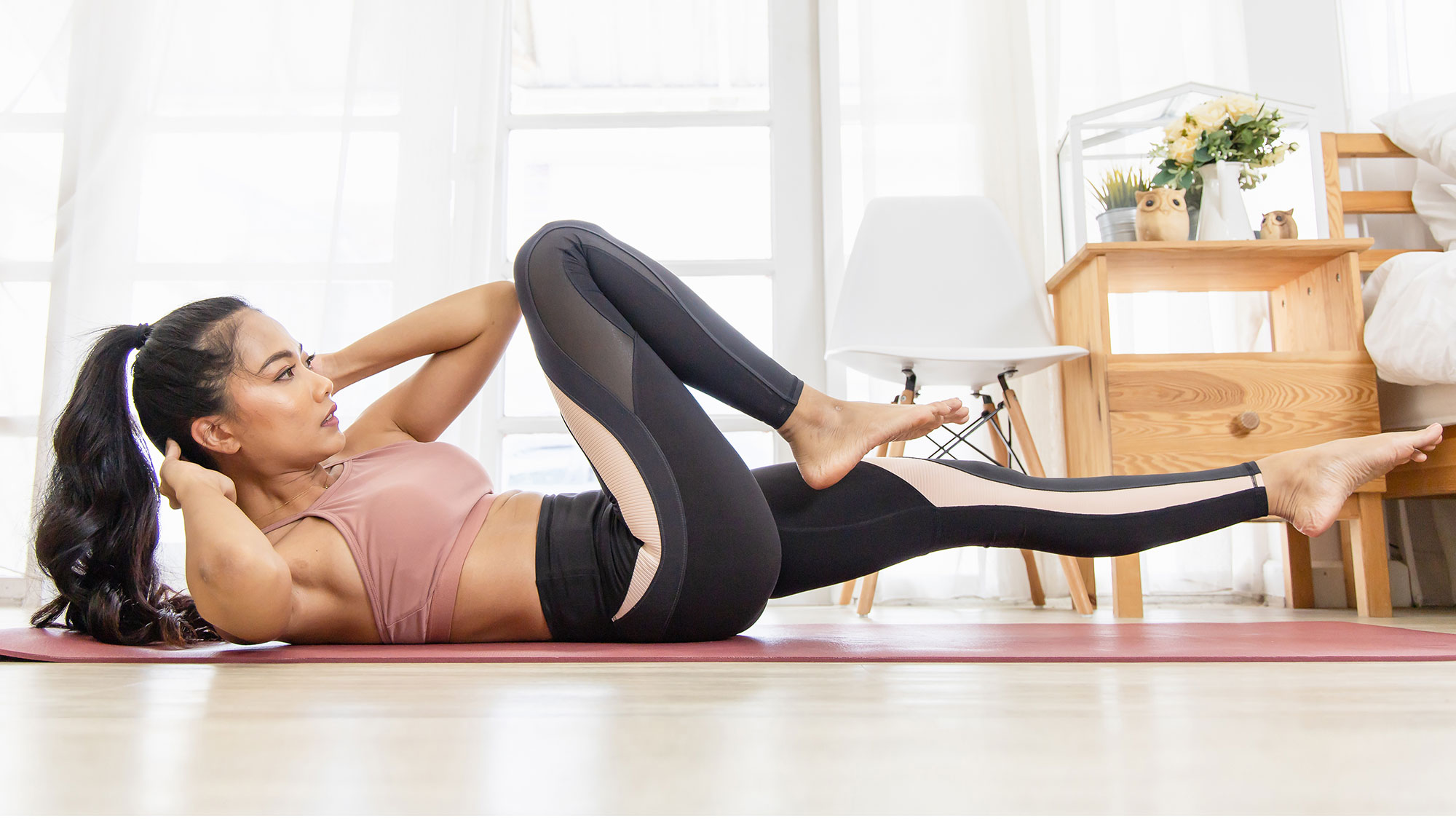
If you’ve ever done endless crunches in search of stronger six-pack muscles, you may have been missing a trick: Pilates abs workouts. This low-impact, accessible exercise is ideal for beginners, but still challenges your core muscles.
Grab a yoga mat (and a small Pilates ball if you have one) and do this five-move routine from Louise Buttler, the founder of online Pilates platform Live Brave.
“Pilates is centered around having a strong core,” says Buttler. “It’s a form of exercise that targets all the abs muscles—obliques, transversus abdominis and rectus abdominis—which improves posture, lower-back strength and helps reduce the risk of injury.”
Do the following routine two to three times, depending on your fitness level.
How to do Louise Buttler’s Pilates abs workout
1. (Supported) Russian Twists
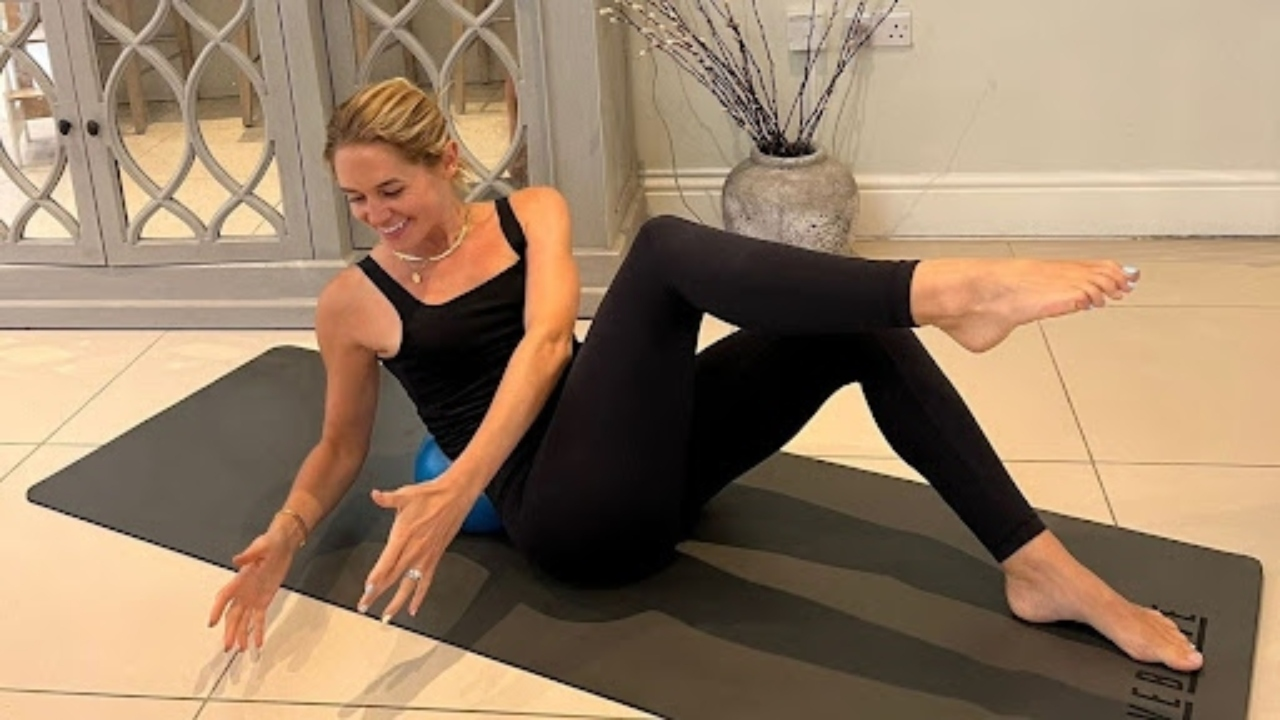
Reps: 10 on each side
- Sit on your mat with your knees bent and your feet flat on the floor, in line with your sit bones.
- Keep your spine straight and lean backward so your back forms a 45° angle with the floor. Buttler says you’ll know you’ve found the right position if you feel your abs “quiver”. If you have a small Pilates ball, you can place this between the base of your spine and the floor for added support.
- Reach your arms out in front of you. Inhale, lift your right foot off the floor and reach over to the right with your hands, almost touching the floor.
- Exhale, then inhale again and bring your arms back to the center, slowly lowering your right foot back to the floor. That’s one repetition.
- Repeat this movement on the left side of your body, then continue alternating between the two until you reach 10 repetitions on both sides.
2. Chest lift with rotation
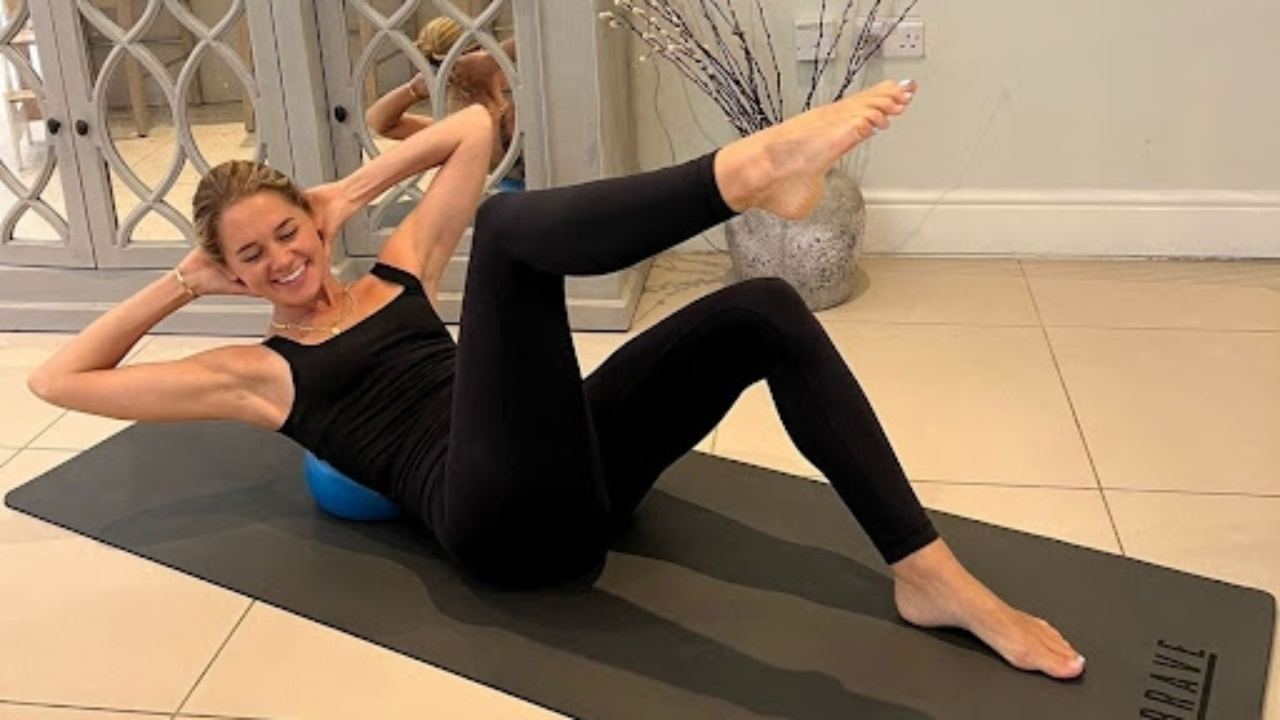
Reps: 5 on each side
- Start by sitting on your mat with your knees bent and your feet flat on the floor, in line with your sit bones.
- Lie back on your mat then interlace your hands behind your head, with your thumbs running down your neck, and spread your elbows wide.
- Take a deep breath then, as you exhale, pull your belly button inwards and imagine knitting your ribcage together. Slowly lift your right foot off the floor and reach your left armpit towards the top of your right thigh.
- Inhale and return to your starting position, then exhale and repeat on the other side, allowing the front of your ribcage to drop down. Repeat this movement five times on each side. Again, you can place a small Pilates ball under your back to support this movement.
3. Oblique crunches
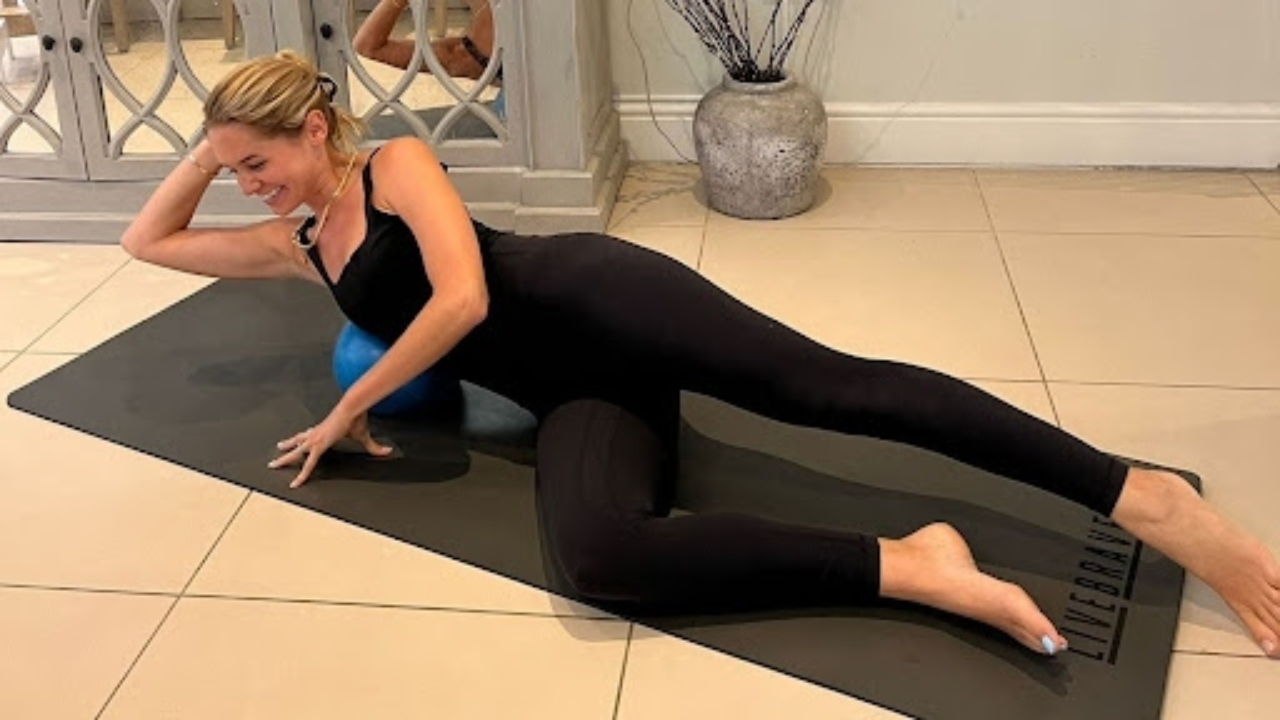
Reps: 10 on each side
- Lie on your side with your top leg straight and your lower leg bent (as pictured above). Use your lower arm to support your head, then place your other hand on the ground in front of you for balance. If you want to use a small Pilates ball for this, place it under your ribcage.
- Take a deep breath then, as you exhale, lift your ribcage up and away from the floor before controlling it back down to the starting position. Repeat 10 times on each side.
4. Lower abs with straight legs
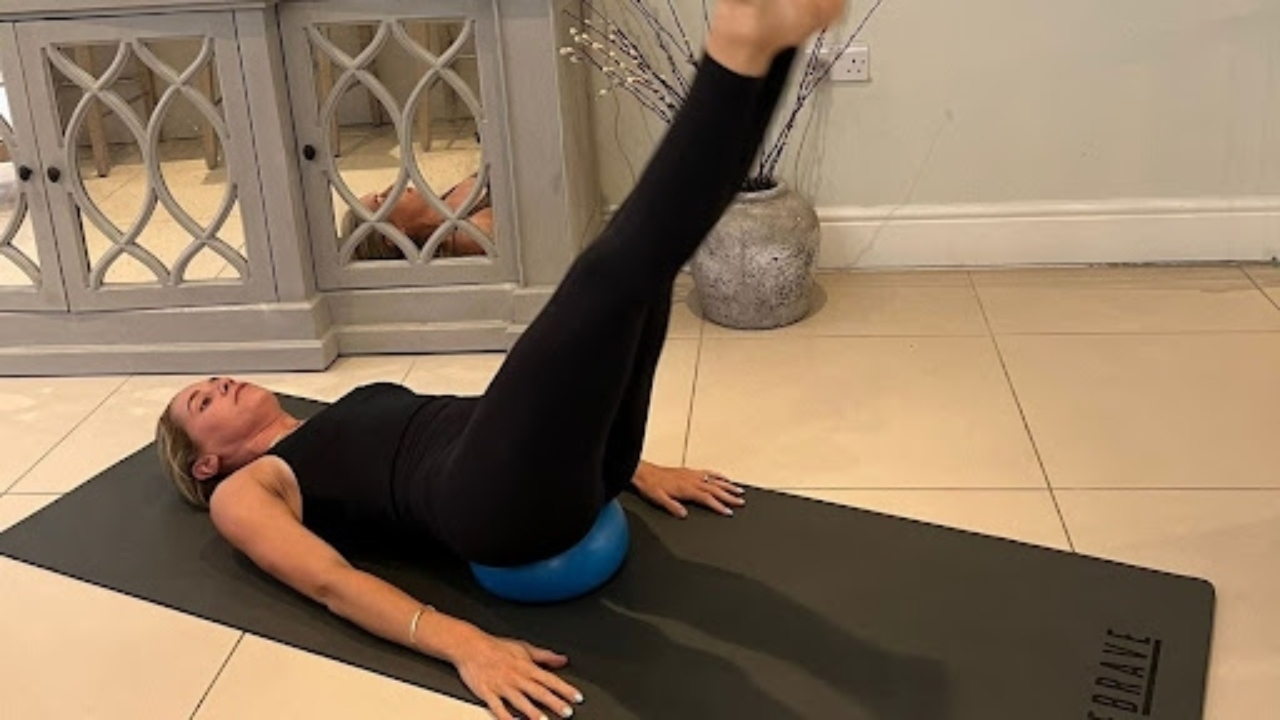
Reps: 10
- Lie flat on your back with your legs together and fully extended. Inhale then, as you exhale, think about pulling your belly button in towards your spine and lift your legs until they are perpendicular with the floor.
- Control them back to the floor, and repeat this 10 times. If you’re using a Pilates ball, place this under the base of your spine. This will add an extra stabilizing challenge for your muscles.
5. Scissors for lower abs
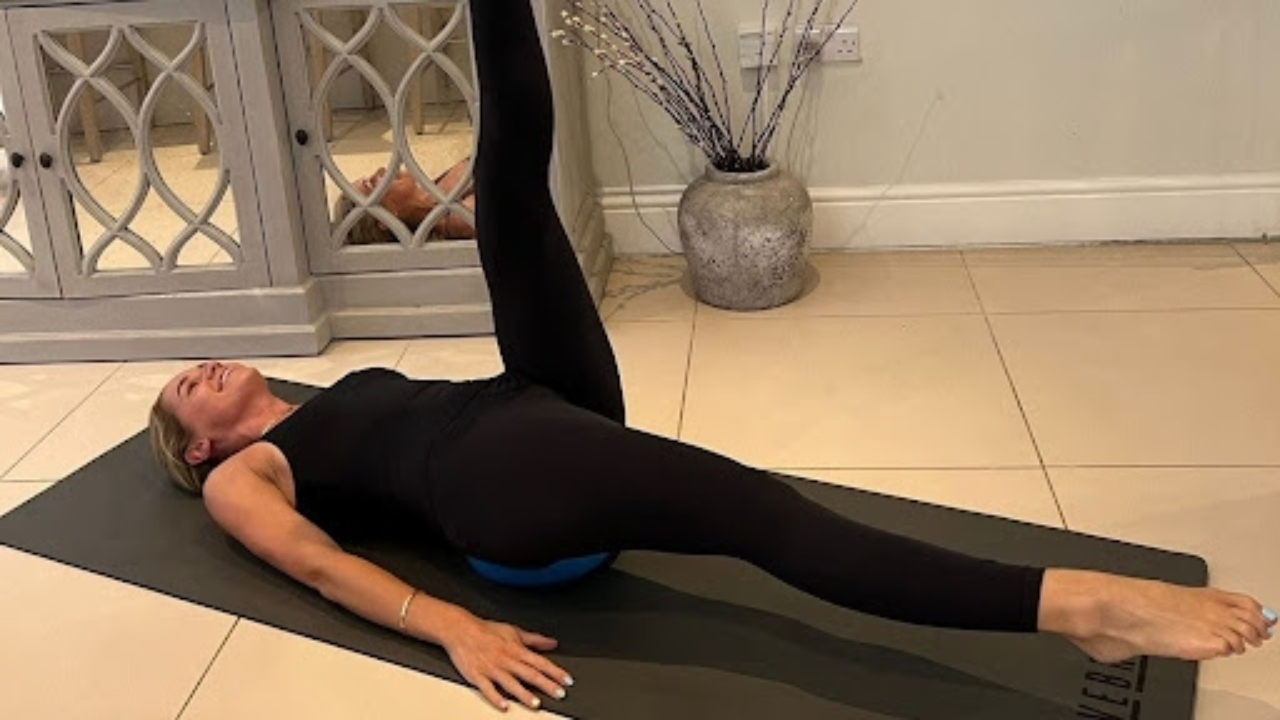
Reps: 10 on each side
- Lie flat on your back with your arms at your sides and your palms face down.
- Keeping your legs straight, lift them a couple of inches off the floor. Take a big breath then, as you exhale, raise your right leg so it’s perpendicular with the floor while keeping your left leg parallel with the ground.
- Take another breath, and on the exhale move both legs at the same time to swap their positions, so the left leg ends up perpendicular to the floor and the right leg is parallel with the ground. That’s one repetition. Perform 10 in total. If you want to use a small Pilates ball for an extra stability challenge, you can place it under the base of your spine.
Pilates abs workout: top tips for beginners
- Get the right equipment: All you need for this routine is one of the best yoga mats for support. If you enjoy Pilates, it might be worth also picking up a set of the best resistance bands too.
- Pay attention to your breath: Adjusting the way you breathe can help relax tense muscles and relieve mental tension. Inhale to engage your tummy muscles and exhale during the ‘effort’ part of the movement.
- Focus on your form: Allow your spine to round by scooping in your abs. It strengthens your deep abdominals and stretches your back muscles.
Is Pilates good for you?
Pilates is a great way to boost your daily activity levels, build a stronger body and fend off injuries, but according to Buttler this list barely scratches the surface of the benefits.
“Pilates helps create mobility and strength in the body to counteract everything that happens when we sleep, sit for long periods or exercise major muscle groups in other sports,” she says.
There are hundreds of muscles in the body, but most get overlooked as people focus on the major muscle groups in the chest, back, arms, shoulders and legs during other exercise styles like strength-training and HIIT workouts. Pilates focuses on the smaller stabilizing muscles that play a pivotal role in a fit and functional body.
“It works all of the smaller intrinsic muscles that are often overlooked in a gym session," says Buttler. “It will help people avoid injury and it builds a strong body and mind for life. It’s also a low-impact workout that gets results, in terms of muscle tone, without the need for high-impact exercises.”
This puts less pressure on your joints, making it a top option for those recovering from injuries or looking to exercise without aggravating pain in areas like the knees and hips.
If you enjoyed this session and want to try more similar practices, why not give our Pilates for beginners plan a go?







